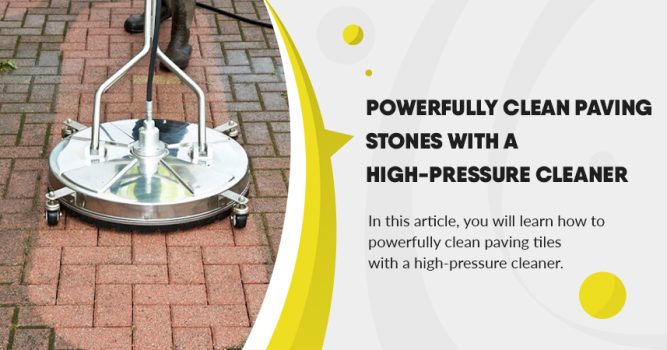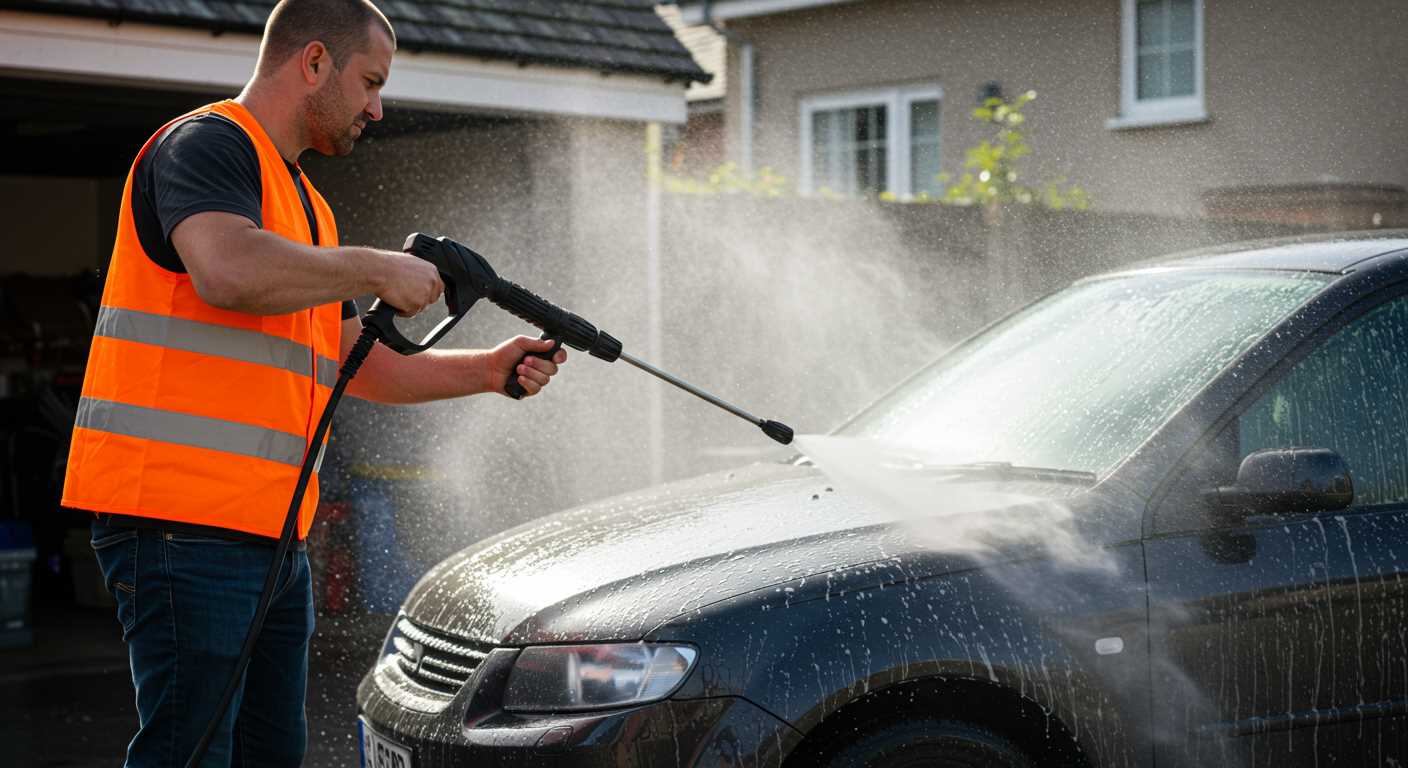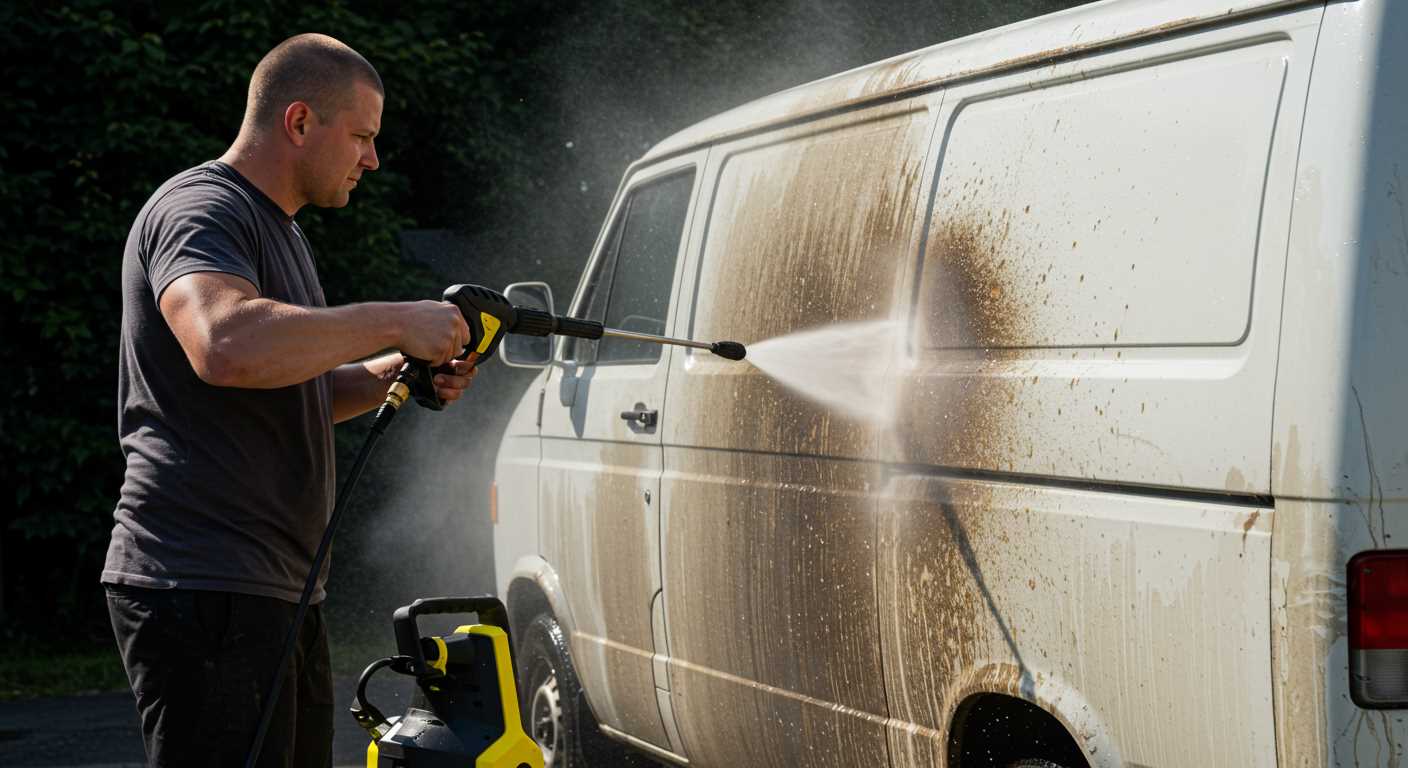

For owners of paved driveways and yard areas, the pressure washer is often a beneficial invention. An effective cleaning effect can be achieved with relatively little physical effort. Nevertheless, compared to cleaning without mechanical assistance, there are some aspects that make manual labour an advantage.
Do not underestimate the water pressure
The pressure with which a high-pressure cleaner works is often underestimated. The device exceeds many other everyday water pressures many times over. Anyone who has ever seen water escaping in a fountain during a water pipe burst has witnessed a water pressure of two to four bar. Normal high-pressure cleaners are often used in the pressure range between eighty and 160 bar.
The following examples show water pressure encountered in everyday life. The atmospheric air pressure (one bar) must be subtracted from all figures.
- One bar delivers water to a height of ten metres
- One bar corresponds to about one kilogram on one square centimetre
- Water comes from public pipes at two to four bar
- The water pressure increases by one bar for every ten metres of depth
- A car tyre needs about 3.3 bar
- Police water cannons “fire” at up to twenty bar
- 200 bar pressure in a cylinder/pipe (ø6 cm) exerts a weight force of 5.55 tonnes.
When cleaning the pavement, use the right amount of water and work carefully
The immense force can roughen and damage concrete and, if used inappropriately, even blast off corners and edges. Material removal begins at 600 bar impact pressure. Anything loose, such as earth and gravel fillings in joints, plant troughs and loosened paving stones, can easily be “catapulted” by impact pressures of eighty bar or more. This danger does not exist with brushing and scrubbing cleaning without a high-pressure cleaner.
Advantages and disadvantages of cleaning with a high-pressure cleaner
How to clean paving stones with a pressure washer?
Cleaning paving stones with a high-pressure cleaner can provide a powerful and effective way to remove dirt, grime, moss, and other stains. Here’s a guide on how to powerfully clean your paving stones using a high-pressure cleaner:
Prepare the area
Remove any loose debris such as leaves or twigs from the surface of the paving stones. Sweep the area thoroughly to clear the pathway.
Safety precautions
Before starting, wear protective eyewear and gloves to shield yourself from debris and water splashes. Also, ensure that the surrounding area is clear and free from any fragile objects that could be damaged by the high-pressure water.
Adjust the pressure
Most high-pressure cleaners have adjustable pressure settings. Set the pressure to a level suitable for cleaning the paving stones. Start with a lower pressure setting and gradually increase if necessary, but be cautious not to use excessive pressure that could damage the stones or the grout.
Select the appropriate nozzle
Use a fan spray nozzle or a rotating nozzle for cleaning paving stones. These nozzles provide a wider and more even spray pattern, reducing the risk of concentrated pressure that can cause damage.
Start cleaning
Position the high-pressure cleaner nozzle at a slight angle (around 45 degrees) to the paving stones. Start cleaning from one corner and work your way across the surface, using overlapping strokes. This ensures thorough coverage and helps to remove dirt and stains effectively.
Pay attention to stubborn stains
For stubborn stains or moss growth, you may need to use a more concentrated stream or adjust the nozzle closer to the surface. Move the nozzle slowly and evenly over the affected areas to allow the high-pressure water to loosen and remove the stains.
Clean in sections
Divide the area into manageable sections and clean one section at a time. This approach ensures that you cover the entire surface evenly and prevents the cleaning solution from drying out before rinsing.
Rinse the area
After cleaning a section, rinse the paving stones thoroughly with clean water. This removes any loosened dirt and detergent residue. Ensure that no cleaning solution remains on the surface, as it can leave behind a slippery residue.
Repeat if necessary
If there are still stubborn stains or areas that require further cleaning, repeat the process for those specific spots. Adjust the pressure or nozzle position as needed to target the problem areas effectively.
Allow the area to dry
Once you have finished cleaning, allow the paving stones to air dry completely. Avoid walking on the surface until it is dry to prevent slips or accidents.





.jpg)


